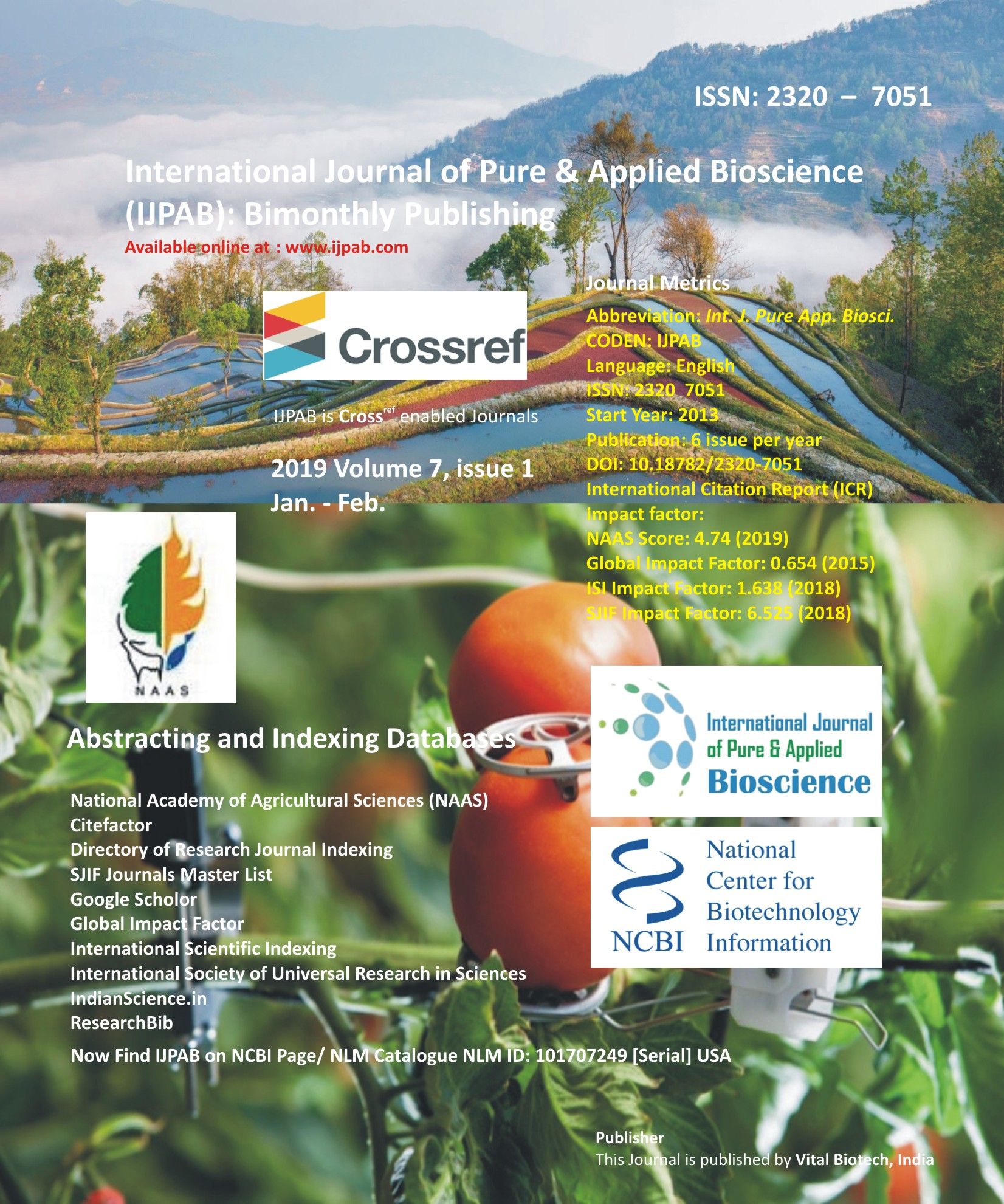
-
No. 772, Basant Vihar, Kota
Rajasthan-324009 India
-
Call Us On
+91 9784677044
-
Mail Us @
editor@ijpab.com
International Journal of Pure & Applied Bioscience (IJPAB)
Year : 2019, Volume : 7, Issue : 1
First page : (22) Last page : (34)
Article doi: : http://dx.doi.org/10.18782/2320-7051.6979
Characterization of Carob Trees Suggests High Morphological Variability in Populations of the Middle Atlas Region, Morocco: Towards Use of Carob Germplasm in Breeding Program
El Bakkali Ahmed1*, Essarioui Adil2, Mekkaoui Abderahman1, Hssaini Lahcen1, Mamouni Ali1
1INRA, UR Amélioration des Plantes et Conservation des Ressources Phytogénétiques, Meknès, Morocco
2INRA, UR Système Oasiens, Errachidia, Morocco
*Corresponding Author E-mail: ahmed_elbakkali@yahoo.fr
Received: 19.10.2018 | Revised: 24.11.2018 | Accepted: 3.12.2018
ABSTRACT
Carob tree (Ceratonia siliqua L.) is a Mediterranean species known for its high tolerance to drought conditions. In Morocco, carob tree is predominantly encountered in most mountainous regions under agro-forestry systems. Despite its economic and environmental importance, carob tree is still to be neglected by research and development programs resulting in no commercial cultivars selected so far. Yet, carob populations can be a precious genetic resource to reach this objective. The aim of this study was to evaluate morphological variability among 70 female carob trees growing in 5 localities in the Middle Atlas region, Khenifra province. Morphological variability was assessed based on 14 characters related to leaves, leaflets, pods and kernels. Results showed a high variation among carob trees for almost all the investigated characters. Specifically, clustering analysis yielded 5 site-independent homogenous groups, indicating important morphological diversity in local carob germplasm. Correlation and regression analyses showed causality relationships among traits and therefore can be used as predictors in selection programs. Overall, Middle Atlas carob populations are characterized by short and narrow pods that are rather light, skinny and thin with high number of light seeds and high kernel yield. Taken together our results contribute significant insights into morphological variability on carob trees at regional scale and shed light on the potential for using carob populations to select promising genotypes that are adapted to local conditions and have high industrial and agronomical performances.
Keywords: Ceratonia siliqua L., Morphological diversity, Kernel yield, Middle Atlas, Morocco.
Full Text : PDF; Journal doi : http://dx.doi.org/10.18782
Cite this article: El Bakkali, A., Essarioui, A., Mekkaoui, A., Hssaini, L., Mamouni, A., Characterization of Carob Trees Suggests High Morphological Variability in Populations of the Middle Atlas Region, Morocco: Towards Use of Carob Germplasm in Breeding Program, Int. J. Pure App. Biosci.7(1): 22-34 (2019). doi: http://dx.doi.org/10.18782/2320-7051.6979

